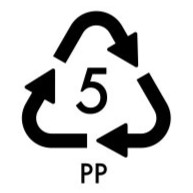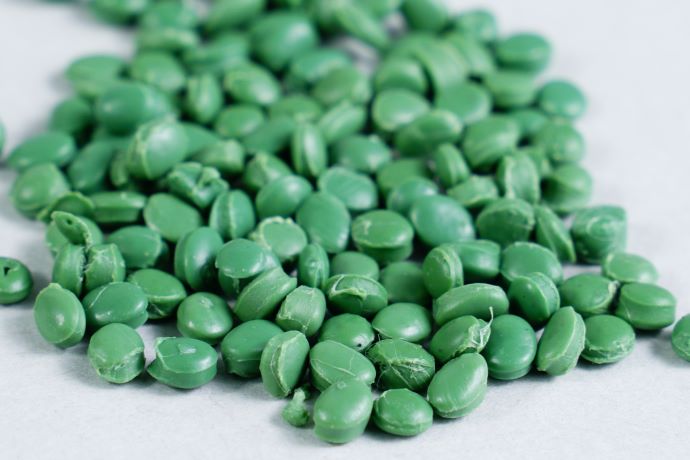Simple Explanation of Recycled Polypropylene (PP)
Without us realizing it, the products we use every day are mostly made from plastic. Starting from products made from PET, PP to HDPE, we have definitely used them all.
Because there are many types of products made from plastic, it is important for us to know more about each type of plastic.
In this article, we will explain several important aspects of polypropylene from its recycling process to the products that can be made from recycled PP material.
With a proper understanding of this type of PP plastic, we hope you can start managing your own plastic waste so that it is easier to recycle later.
Is Polypropylene (PP) Recyclable?

Of course, polypropylene can be recycled! Represented by the number 5 symbol in the recycling triangle, PP is one of three types of plastic that can be widely recycled in various countries, along with polyethylene terephthalate (PET) and high-density polyethylene (HDPE).
Consumers and plastic manufacturers have to work together to recycle PP plastic waste. Consumers must start to realize the importance of sorting and classifying plastic waste wisely, starting from household waste.
Then on the part of the manufacturers, it is necessary to make it easier to identify the type of plastic by providing a packaging recycling symbol clearly.
By establishing synergy between these two sides, it will certainly save the environment from the negative impacts of plastic waste. This can also increase the potential for better plastic recycling.
The Importance of Recycling PP Plastic
Recycling polypropylene brings many environmental and economic benefits.
In terms of environmental benefits, we can protect wildlife and ecosystems from possible damage resulting from unprocessed plastic waste in final disposal.
Another environmental benefit is that we can reduce the need for raw materials for plastic products which in turn can reduce greenhouse gas emissions and save natural resources.
By getting used to the practice of plastic recycling, we are directly encouraging the creation of a circular economy which can bring benefits to the environment and economic resilience.
Polypropylene Recycling Process
The PP plastic recycling process involves several important steps:
- Collection and Separation: PP waste is collected from various sources such as households, industries, and commercial facilities. The waste is then separated based on the type of plastic to ensure the purity of the recycled material.
- Cleaning: PP waste is washed to remove contaminants such as dirt, oil, labels and food residue. This cleaning process is important to improve the quality and purity of the recycled material.
- Grinding: After cleaning, PP waste is ground into small pieces (flakes) and pellets. This process makes handling and further processing easier.
- Melting and Reforming: PP plastic shreds or pellets are melted at high temperatures in an extruder machine. The melted material is then reshaped into new products through processes such as extrusion, injection molding, or blow molding.
- Quality Inspection and Testing: Recycled products are tested to ensure that they meet the required quality standards. Testing includes checking the physical, chemical and mechanical properties of recycled materials.
- Reuse: Recycled PP material is used to make new products such as packaging, automotive components, household appliances, and various other consumer goods.
Mechanical vs. Chemical Recycling Methods
There are two main methods for recycling polypropylene: mechanical and chemical recycling.
- Mechanical Recycling: This process involves shredding and melting plastic without changing its chemical structure. This is the most common method and produces recycled PP plastic pellets that can be used for products such as carpets, fabrics, plastic lumber, and automotive parts.
- Chemical Recycling: This method breaks down polymers into their monomers, which can be purified and polymerized into new PP. Although more energy intensive, chemical recycling can produce higher quality recycled PP suitable for a variety of applications.
Products Made from Recycled PP
Recycled PP can be used to make a wide variety of products. Here are some common items made from recycled polypropylene:
- Clothing: Recycled PP can be turned into fiber and woven into fabric for clothing such as t-shirts.
- Food Containers: Due to its high melting point and resistance to acids and bases, recycled PP is ideal for making food storage containers.
- Bags: Many grocery stores use bags made from a blend of recycled PP and natural fibers.
- Tableware: Recycled PP is used to produce durable and heat-resistant tableware such as plates, cups, bowls and trays.
- Gardening Supplies: Plant pots, planters and decorative containers made from recycled PP are popular among gardeners.
Conclusion
Recycling polypropylene (PP) plastic is essential to reduce plastic waste and save resources. With the right recycling process, PP plastic can be given new life in a variety of products, from clothing and food containers to gardening supplies and automotive parts.
By increasing awareness and participation in PP plastic recycling, we can contribute to realizing a circular economy.
So, next time you come across the PP 5 symbol on your plastic items, remember that these products can be recycled and turned into something new and useful.


